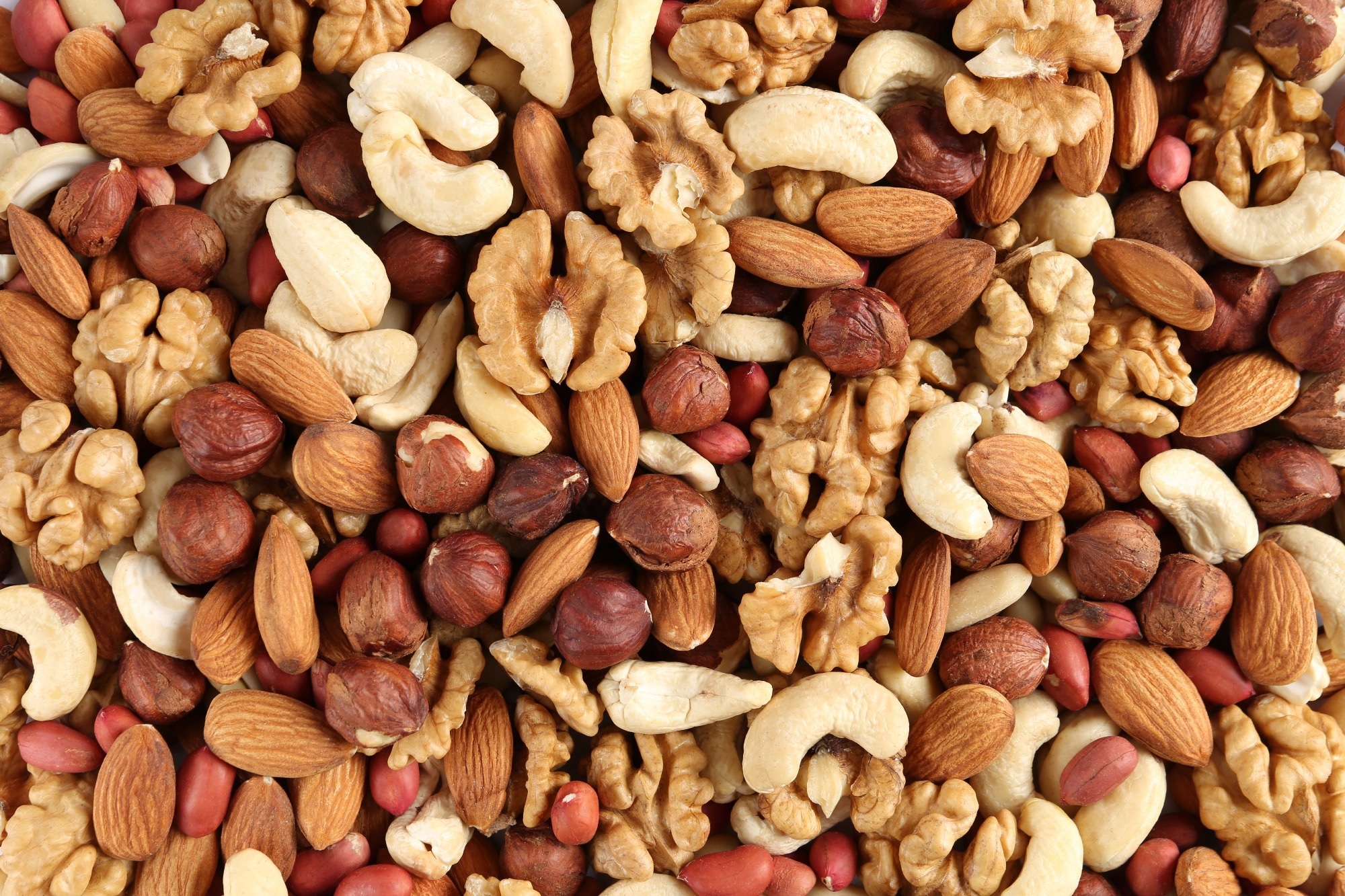Introduction
Cereal grains and vegetables
Drinking water and other beverages
Fruits
Nuts, seeds, and legumes
Animal products
Neurological effects of trace lithium
Safety considerations and knowledge gaps
References
Further reading
Lithium, long used in psychiatry, is also a naturally occurring element present in food, water, and the environment. Recent studies highlight its potential role as a trace nutrient with neuroprotective effects and safety considerations at dietary levels.
 Image Credit: Nopparat Promtha / Shutterstock.com
Image Credit: Nopparat Promtha / Shutterstock.com
Introduction
Since the mid-1900s, lithium carbonate has been widely used for the management of bipolar disorder (BD), particularly for patients experiencing acute mania. In addition to its therapeutic role, lithium is also ubiquitously present within the environment and, as a result, can be found in various matrices, including drinking water, vegetables, as well as natural and anthropogenic sources.
Cereal grains and vegetables
Lithium content in plants can vary, with grains and vegetables accumulating up to 4.6 µg/g of lithium, in addition to other lithium-rich sources like coriander leaves, tomatoes, garlic, nutmeg, and cumin seeds. Significantly lower levels of lithium can be found in onions, green chilies, cauliflower, rice, mushrooms, and wheat2.
Current estimates suggest that 66-90% of dietary lithium originates from cereal grains and vegetables, with drinking water and animal sources also contributing to lithium intake. Thus, vegetarians, who typically consume a diet that is particularly rich in grains and vegetables, may ingest higher levels of lithium than individuals who also consume animal proteins.
Drinking water and other beverages
Daily intake of lithium from dietary sources can vary due to a wide range of factors like geographical location, with lithium intake often very low in Europe. Comparatively, other regions like northern Chile and Argentina report higher concentrations of lithium often exceeding 1,000 µg/L in their drinking water1.
The water source can also determine lithium levels, as seawater typically has a higher concentration of lithium between 140-200 µg/L as compared to 1-10 µg/L in surface waters1. These variations in lithium concentrations within natural waters can be attributed to both geological sources and human contamination from the lithium-rich brines of batteries.
As a result, lithium is included on the United States Environmental Protection Agency (EPA) Contaminant Candidate List (CCL), thereby warranting additional data collection and research for its potential regulation in the future.
Nutritional studies suggest the beneficial role of lithium as an essential trace element for human dietary intake.2”
In a recent study of over 1,000 food and beverage samples, researchers concluded that the estimated lithium intake dose is less than both the provisional sub-chronic and chronic reference doses recommended by the U.S. EPA. These findings confirm that the levels of lithium present in both food and beverage samples can be considered safe for human consumption. However, certain populations may be at a greater risk of toxicity, such as pregnant people or those with chronic diseases like psoriasis1.
Fruits
Citrus fruits including lemons, limes, clementines, and grapefruits contain detectable levels of lithium, with dry weight concentrations generally in the µg/g range rather than tens of mg/kg. Dietary lithium can also be obtained through the consumption of grapes, apples, and bananas.
Nuts, seeds, and legumes
Nuts are particularly rich in lithium, with estimated concentrations of 1.09 and 3.12 µg/g in cashew nuts and walnuts, respectively5. Sunflower seeds, hazelnuts, and pine nuts are also notable sources of dietary lithium.
 Image Credit: Nopparat Promtha / Shutterstock.com
Image Credit: Nopparat Promtha / Shutterstock.com
Animal products
Although at a lower concentration than other foods, various meats and fish have detectable levels of dietary lithium ranging from 0.012-0.06 µg/g6. In a 2021 study conducted in Iran, researchers reported lithium levels ranging from 38.4-39.7 µg/g across two brands of canned tuna, with these levels notable but requiring cautious comparison with provisional reference values rather than official EPA thresholds7.
Neurological effects of trace lithium
Recent studies suggest that low doses of lithium or increased dietary intake of this mineral may provide normothymic effects. Some of the different mechanisms that may contribute to these effects include inhibiting enzymes like glycogen synthase kinase 3β (GSK-3β) by competing with magnesium or sodium ions that regulate intracellular processes, as well as interfering in the synthesis and release of neurotransmitters. Mechanistic insights into the role of endogenous lithium have been gained by studies examining disrupted lithium homeostasis.
A recent Nature study reported significantly lower levels of lithium in the brains of individuals with mild cognitive impairment (MCI), a precursor condition for Alzheimer’s disease. These observations led to in vivo studies, wherein depleted lithium within the brain led to increased deposition of amyloid-β plaques and the accumulation of phosphor-tau. Lithium was also found to be sequestered in amyloid plaques, reducing its bioavailability, and deficiency correlated with loss of synapses, axons, and myelin, accelerated cognitive decline, as well as an inflammatory response characterized by increased microglial activation. Replacement therapy with lithium orotate prevented these pathological changes in animal models.3
The neuroprotective effects of lithium have also been associated with its ability to significantly increase brain-derived neurotrophic factor (BDNF) levels in hippocampal neurons when administered at therapeutic doses4. BDNF is essential for neurogenesis and neuroplasticity, both of which protect against neurodegenerative diseases like Alzheimer’s and Parkinson’s disease, as well as mood disorders like depression and anxiety.
The insulin-mimetic effects of lithium may also reduce the risk of neurocognitive disorders that are secondary to metabolic diseases like obesity and type 2 diabetes mellitus (T2DM)4. Glucose and insulin dysregulation are characteristic features of Alzheimer’s disease, which suggests another mechanism by which lithium protects against neurodegeneration.
Harvard Medical School Alzheimer's research finds lithium improves memory in mice
Safety considerations and knowledge gaps
The potential health benefits of lithium intake, combined with recent observations that lithium deficiency can increase impulsiveness, nervousness, and decompensation, have led researchers to postulate whether lithium supplementation or its biofortification in foods may improve health outcomes. Although lithium is not yet officially considered a micronutrient, many researchers currently recommend a provisional lithium intake of 1,000 µg/day for a 70-kg adult10. Other experts argue that lithium should be recognized as a trace element, given evidence of anti-suicidal and neuroprotective effects even at microdoses.
As compared to oral doses of lithium used for the treatment of bipolar disorder, which are typically within the range of 600-1,200 mg/day, endogenous lithium levels are up to 1,000-times lower. Nevertheless, the effects of chronic low-dose lithium exposure on the human body remain unclear, underscoring the need for comprehensive toxicology, safety, and pharmacodynamic studies.
References
- Szkarska, D., & Rzymski, P. (2018). Is Lithium A Micronutrient? From Biological Activity and Epidemiological Observation to Food Fortification. Biological Trace Element Research 189(1); 18-27. DOI:10.1007/s12011-018-1455-2, https://link.springer.com/article/10.1007/s12011-018-1455-2
- Iordache, A. M., Voica, C., Roba, C., & Nechita, C. (2024). Lithium Content and Its Nutritional Beneficence, Dietary Intake, and Impact on Human Health in Edibles from the Romanian Market. Foods 13(4); 592. DOI:10.3390/foods13040592, https://www.mdpi.com/2304-8158/13/4/592
- Aron, L., Ngian, Z. K., Qiu, C., et al. (2025). Lithium deficiency and the onset of Alzheimer’s disease. Nature. DOI:10.1038/s41586-025-09335-x, https://www.nature.com/articles/s41586-025-09335-x
- Hamstra, S. I., Roy, B. D., Tiidus, P., et al. (2023). Beyond its Psychiatric Use: The Benefits of Low-dose Lithium Supplementation. Current Neuropharmacology 21(4); 891-910. DOI:10.2174/1570159X20666220302151224, https://www.eurekaselect.com/article/121255
- Gonzalez-Weller, D., Rubio, C., Gutierrez, A. J., et al. (2013). Dietary intake of barium, bismuth, chromium, lithium, and strontium in a Spanish population (Canary Islands, Spain). Food and Chemical Toxicology 62. DOI:10.1016/j.fct.2013.10.026, https://www.sciencedirect.com/science/article/abs/pii/S0278691513007011
- Terao, T. (2015). Is lithium potentially a trace element? World Journal of Psychiatry 5(1); 1-3. DOI:10.5498/wjp.v5.i1.1, https://www.wjgnet.com/2220-3206/full/v5/i1/1.htm
Further Reading
Last Updated: Aug 20, 2025